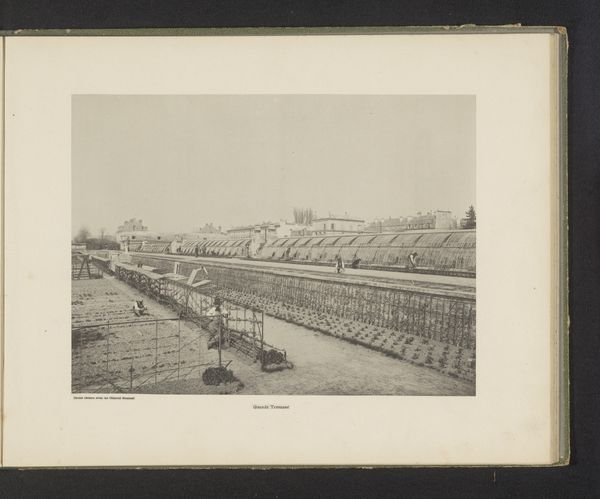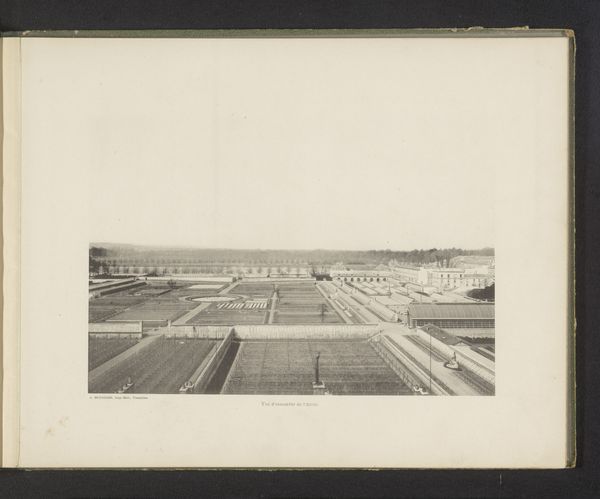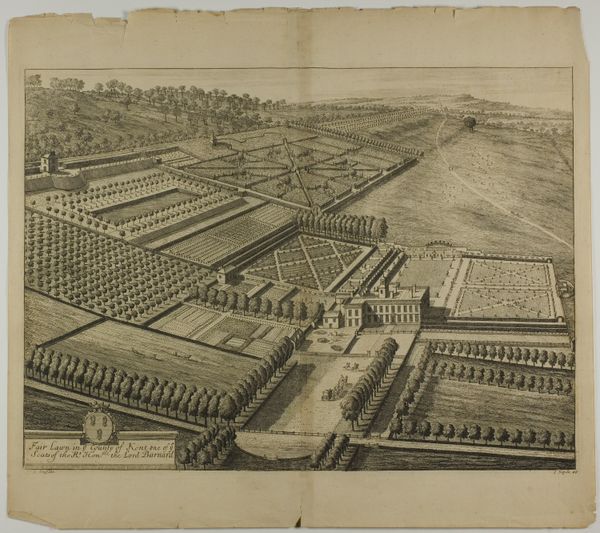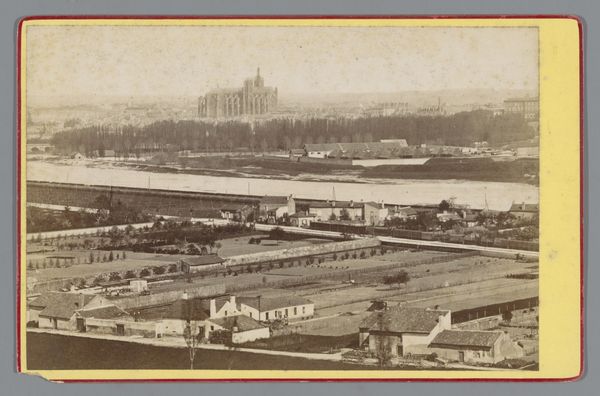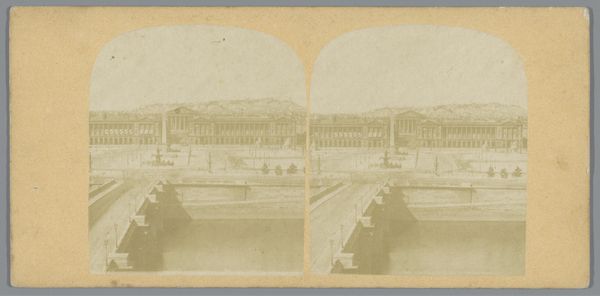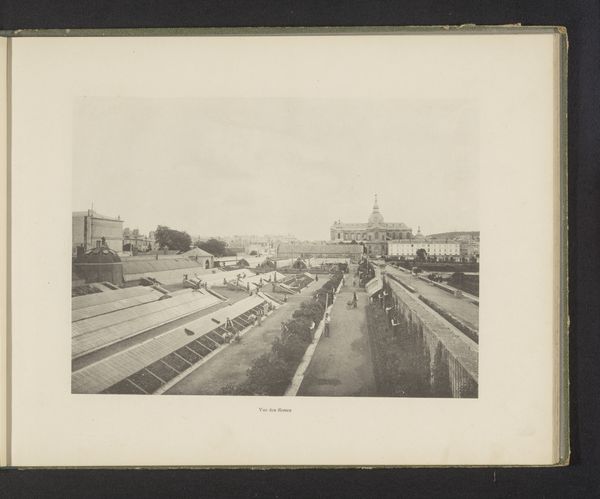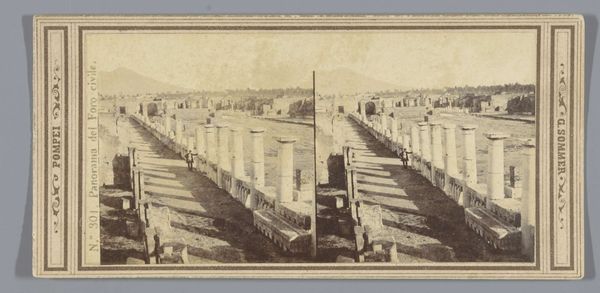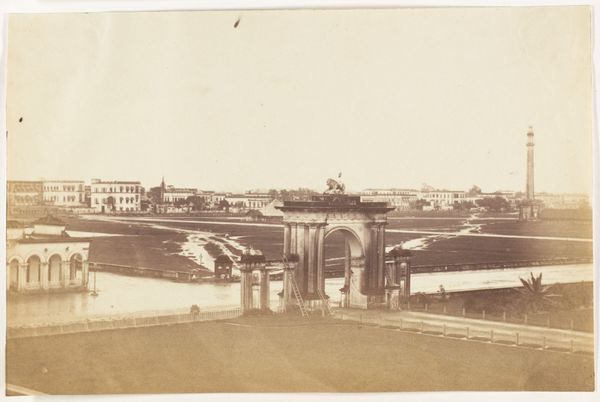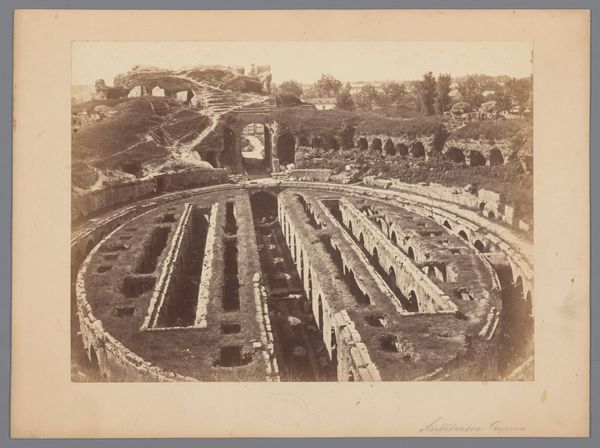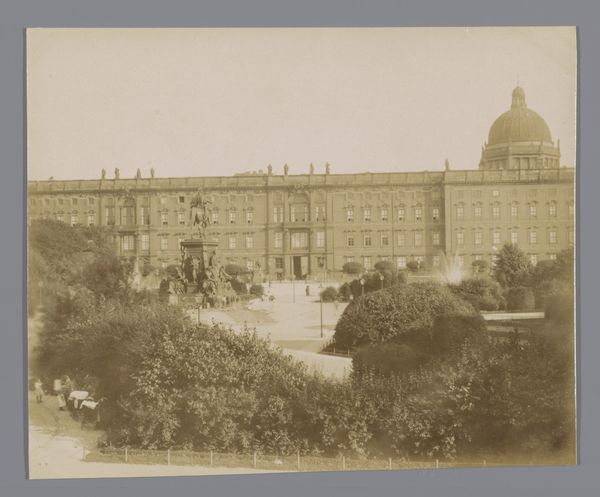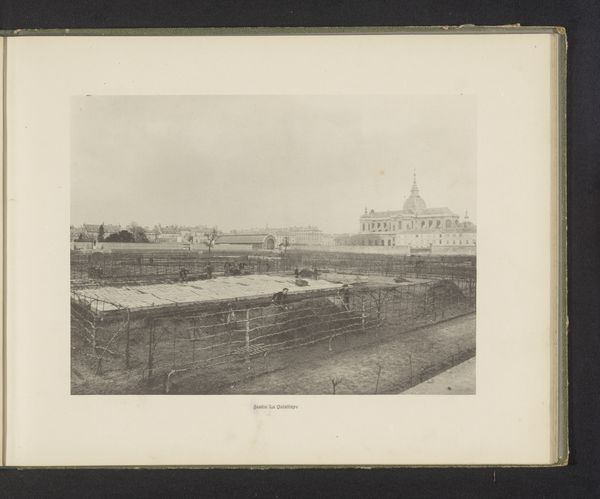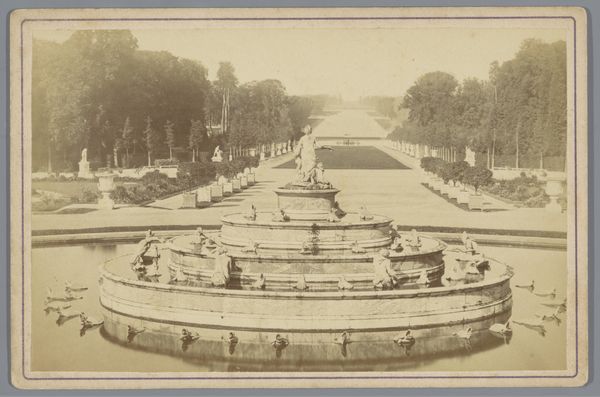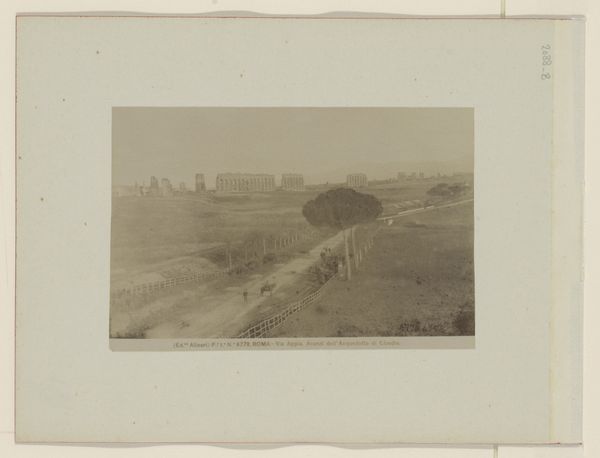
Gezicht op de tuin van het Palais-Royal te Parijs c. 1865 - 1875
0:00
0:00
Dimensions: height 99 mm, width 151 mm
Copyright: Rijks Museum: Open Domain
Editor: This gelatin silver print, taken by Compagnie Photographique Debitte & Hervé around 1865 to 1875, presents a view of the Palais-Royal garden in Paris. There’s something so calming in the rigid perspective and soft tonality of this image, it feels almost meditative. How do you interpret this work through a formalist lens? Curator: Its inherent structure fascinates me. The photographic composition is strictly organized, with rows of colonnades acting as frames within frames, a calculated employment of pictorial space. The soft tonal range, especially in a gelatin silver print, amplifies a certain visual homogeneity. Note how the garden's ordered elements relate to those rigid arcades that enclose it, shaping depth in the visual experience. Editor: So, it’s not really about *what* is being shown but rather *how* it’s shown? The tonal gradation from foreground to background, it leads the eye into that defined vanishing point and structured space. Curator: Precisely. What significance can be deduced from the contrast between natural and structural forms, or from the visual language of orthogonal arrangements, as they relate to the aesthetic impact of the whole photograph? Does this emphasis reflect ideas about beauty during this time? Editor: I see now that the formalism emphasizes not only aesthetic elements but also the semiotics inherent in the architectural elements. I’m starting to appreciate the structural organization in shaping my reading experience. Curator: Indeed. Now that we can comprehend its structural subtleties and the relationships that constitute its internal language, one can recognize an example of how the composition determines interpretation. Editor: Thank you for guiding me towards appreciating the construction and intrinsic formal language! It transforms how one interprets art, no?
Comments
No comments
Be the first to comment and join the conversation on the ultimate creative platform.
